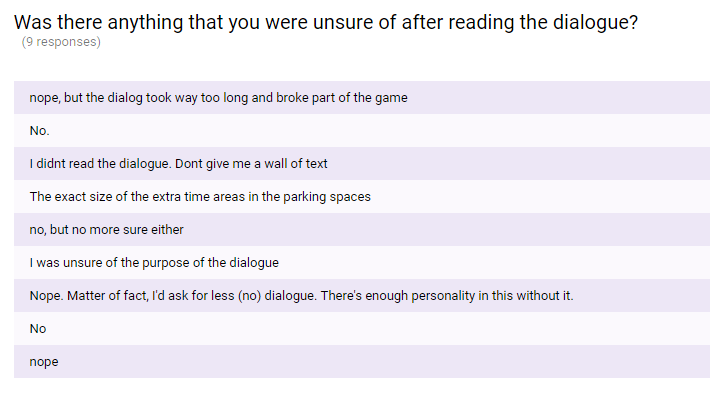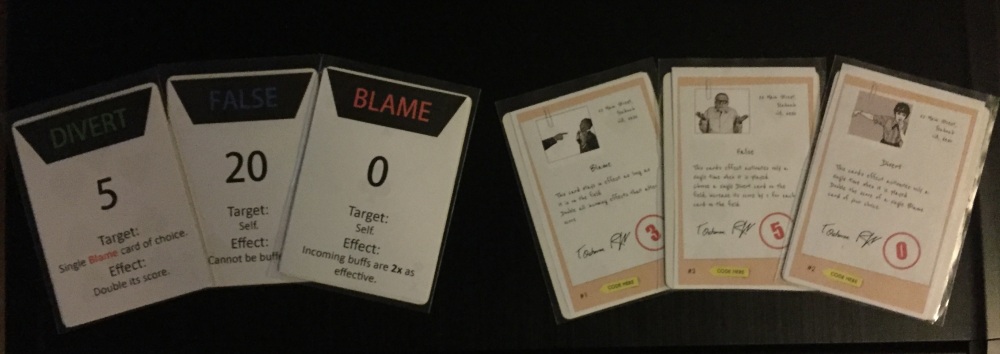Project 2 & 3 Pivot
In both project 2 and 3 there was a lot of feedback that ended up changing major parts of the games. Most of the time it wasn’t stuff that we had thought of at all, and sometimes they were risks we take for play testing to see what people think.
Project 2
In project 2 our second iteration of the game included a very complex system for maths and card dynamics. The cards explanation was confusing to the play testers because they could not figure out what card was being affected by the card effects, and they couldn’t figure out when card effects are applicable or not. The play testers main feedback was that the rules and card effects were too vague and left them to guess, and because of the complexity of the game, they aren’t sure what to assume. Because of this we opted to add a target system and a effect type system. The target system makes it so that on a card there will be the cards target displayed and then the cards effect underneath it. Eg.
Previously: Choose a Blame card and add 10 score.
After Update: Target: Blame card of choice. Effect: Add 10 Score
The effect type system helped players know when a cards effect should be applied or not. The two effect types were Trigger and Persistent, trigger meaning that the cards effect is applied when it is played and never again. Persistent means that the effect stays in effect while the card is on the field. These new systems were good for people who knew about card games and were interested enough in games to focus. But that became the new problem…
The game had so many things to remember and the cards were cluttered with jargon, the feedback we were getting from external play testers was telling us to simplify our changes that were meant to simplify the game. Our solution to this was a redesign in cards, thankfully the designers that were working on the cards had designed them to hold a lot of text. Originally I had tried to keep it minimal but I found out that, that was my downfall. Now that there is a paragraph on each card, the effects and targets can be explained in sentence rather than using jargon modifiers that the player doesn’t care to learn about.
Project 3
In the final weeks of Scooch play testing, some meaning feedback was flowing in that we took on board to change the game. We added the dialogue system to better teach the player how to play, but the issue that arises with that is that people don’t like reading. A lot of the feedback suggested that the dialogue system didn’t achieve what we wanted and was a waste of time.

Questionnaire question 1
As you can see with this screenshot, most of the testers seem unsure about the dialogue system and why it exists. So we made some changes to the game, we made the dialogue consist of only 1 line sentences that could be read very quick and also removed the timer that stopped the player from skipping it. We moved the controls out of the dialogue system and put them in the level so that the player learns the controls as they play.

Questionnaire question 2
Another issue with the late additions to the project was that people were very unhappy with levels 11 – 20. Having half the levels being so disliked and causing people to almost rage quit, was a massive problem that I got to fixing straight away. We had our intended features in place and some time on our hands, so I remade levels 11 – 20 to feel more like levels 1 – 10 to keep the game consistent.



